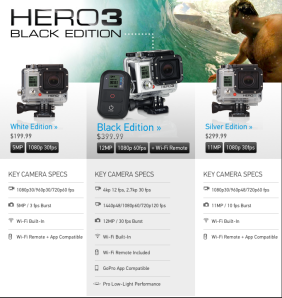Welcome to part 2 of this new bulletin, dear readers.
Next up is the ‘SmartLav+’. Rode’s new Lav microphone for use with android and ios devices.

Rode Smart Lav+
Aimed at those looking to record interviews on the go while also shooting video. The smart lav allows you to plug the microphone directly into your chosen android or ios device, pick your chosen audio capture app, hit record and away you go.
In the box with the microphone you get a pop/wind filter to slide over the top of the mic to help keep breezes and plosives at bay, and a neat little clip that enable you to clip the lav mic to your interviewee.
The Smartlav+ is a great idea if you dont have any other options to hand, or if you need to get a clear, high quality audio interview while on the go, but not being able to check your audio levels (if you are also filming at the same time) as you record, with the device recording the sound being tucked in your interviewees pocket could be a problem in the long run…
But Rode have also come out with some useful cables and a small device that may well help you be able to see your audio levels, monitor them and record more than one Smartlav+ at the same time. And here it is the Rode ‘SC6’:

Rode SC6
The SC6 is an input/output breakout box that allows you to monitor your audio, while recording up to two input sources (unfortunately only to 1 mono channel) using a TRRS plug that connects to your smartphone. Using the RodeGrip you could mount your smartphone with an SC6 and Smartlav’s to your camera enabling you to film and record great audio in a self contained and very portable setup.
Along with the SC6 Rode have also released the SC2, SC3, SC4 & SC7.
The SC2 is a high quality coiled 3.5mm TRS patch cable, ideal for connecting the output of your chosen audio recording device to you camera for a scratch audio track.

Rode SC2
The SC3 is a high quality adapter with a 3.5mm TRS connection and a TRRS connection to allow a Smartlav to be connected to a camera or audio capture device. It has a handy colour coded grey end that matches the end of the Smartlav to indicate they can be used together.

Rode SC3
The SC4 is a high quality adapter designed to allow microphones with a 3.5mm output to be connected to smartphones and tables with a TRRS input connection. Even though the SC4 is primarily aimed at the Apple market it can also be used for most Android devices also.

Rode SC4
Finally, the SC7 is designed to be paired with the Videomic Go, Rode’s budget video microphone. The red cable is colour matched to the TRS-TRS cable that comes with the Videomic Go, the only difference between the two is that the SC7 has the grey colour coded end to denote it is a TRRS connection, which can be plugged into any smartphone or tablet.

Lots of useful accessories coming from Rode, but thats not all there is one last piece of news for you all. Rode have released a NEW studio microphone called the ‘NT-USB’.
The NT-USB is a side address USB condenser microphone with a fixed cardioid polar pattern. Being a USB microphone means that it can be used with Mac or Pc as well iPads when the usb connection kit is connected. It is powered by the USB connection and this is shown with a light on the microphone itself, no light equals no power.
 This microphone is great for podcasters, Voiceovers, ADR, Musicians – basically anyone who needs to get great quality audio, but doesn’t want or need an outboard sound card or audio recording device, as its all done and controlled through the NT-USB itself.
This microphone is great for podcasters, Voiceovers, ADR, Musicians – basically anyone who needs to get great quality audio, but doesn’t want or need an outboard sound card or audio recording device, as its all done and controlled through the NT-USB itself.
The mic itself has all the controls and connections you need right on it. So on the bottom is the USB connection, on the side is a 3.5mm jack socket for your headphones, and then on the front are two swivel controls, the top for controlling your monitoring signal ie how much of yourself you can hear compared to how much of the playback audio, and below that is the headphone volume control knob so that you can control how loud everything is in your headphones.
In the box you also get a desktop stand for the microphone, a pop shield to help keep those plosives at bay, a bag to keep your microphone in, a 6m usb cable and a mic mount. So basically everything you could ever possibly need to get going straight out of the box.
In conclusion this is a great microphone for those looking to record high quality podcasts, voiceovers and more, without the need for extra interfaces and technology, you can just setup, plug in and away you go, simple, yet achieve stunning results.
Here ends the NEWS for now (phew).



















